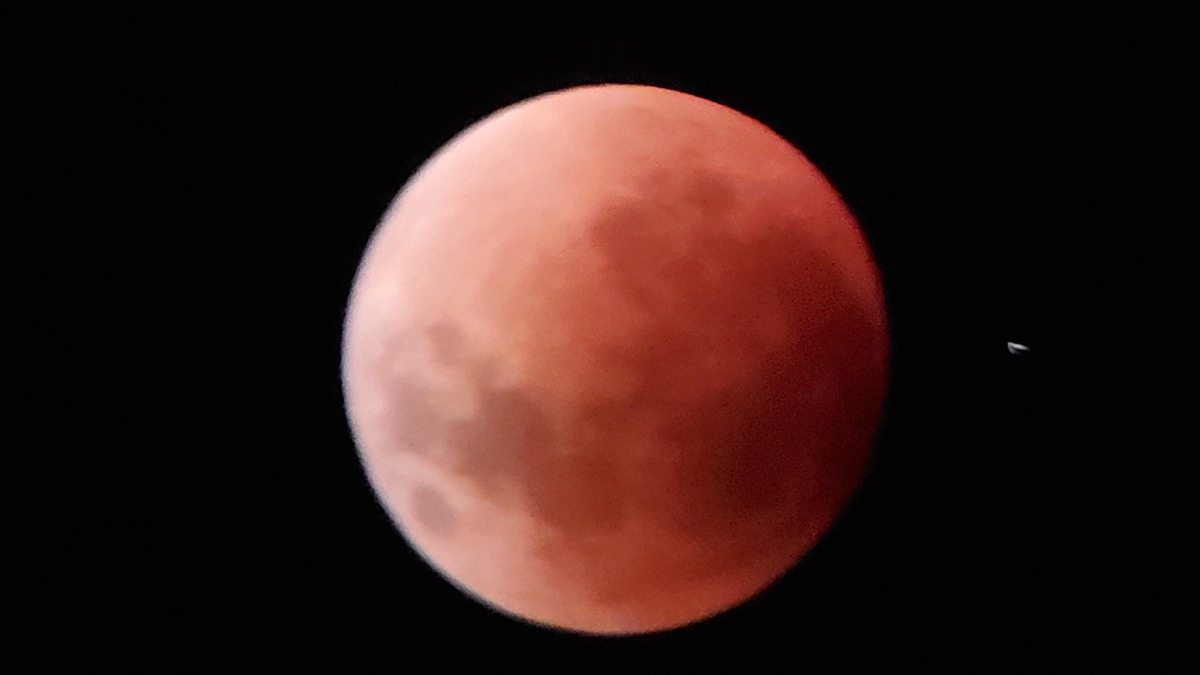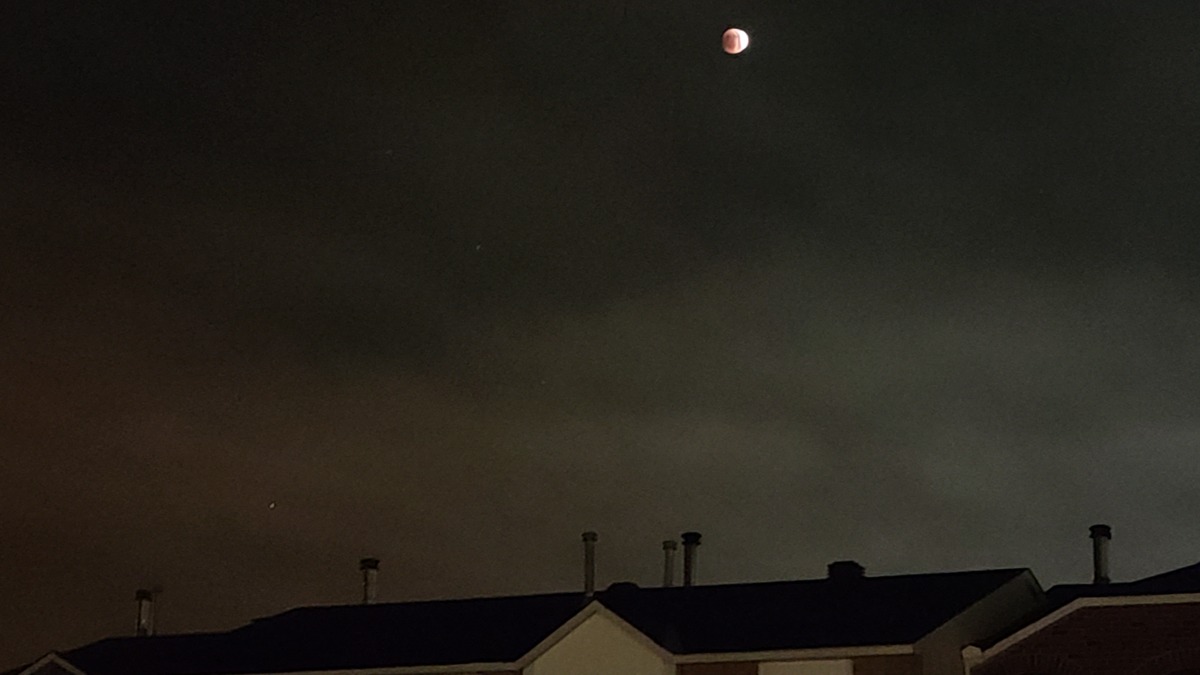See these amazing images of the Blood Moon lunar eclipse from around the world
Billions of people saw the sky show Sunday (May 15) to Monday (May 16).

A Blood Moon lunar eclipse swept over densely populated areas in the Americas, Antarctica, Europe, Africa on Sunday (May 15) and Monday (May 16).
The total eclipse happened as the moon moved into the umbral, or deeper, shadow of Earth. As the sun's light was refracted around the edges of our planet's atmosphere, the red hue shone on the moon's surface.
The big event started with a partial eclipse Sunday (May 15) at 10:28 p.m. EDT (0228 GMT on Monday, May 16), according to TimeandDate.com. The Blood Moon peak around 12:11 a.m. EDT (0411 GMT), with the eclipse ending at 1:55 a.m. EDT (0555 GMT).
A penumbral eclipse, which happens when the moon passes into the edge of Earth's shadow, began and ended roughly an hour after the partial eclipse in New Zealand, Eastern Europe and the Middle East. This produced a more subtle effect, as the light shadow of the Earth fell upon the moon, that was only visible in some conditions.
The red color was very apparent in this LiveScience reader photo taken by Robyn and Mike Morris from San Bruno, Yucatán Peninsula, Mexico.

From Houston, reader Rukhsar Mahmood captured the moon just before it began to be covered by the Earth's shadow.
"The experience was great," Mahmood wrote. "I enjoyed watching the moon looking so big in the evening, and it started getting smaller. Then it started to get covered by this red/black shield, and slowly, the whole moon was covered and the moonlight was nowhere in sight."
Get the world’s most fascinating discoveries delivered straight to your inbox.
You can see the haunting lunar image below.

The full ruddy color of the Blood Moon was captured in this reader photo from Gregg Collins in Bend, Oregon.

Lunar eclipse tonight!#LunarEclipse #waukee #iowa pic.twitter.com/WetSnvj2k2May 16, 2022


@NASA_Lunar #LunarEclipse #lunareclipse2022 from South Africa pic.twitter.com/pyIPPCDgJRMay 16, 2022
Looks like a sci-fi movie outside with the lunar eclipse.#totaleclipseoftheheart #LunarEclipse pic.twitter.com/wioOnaE4ufMay 16, 2022
Amazing #LunarEclipse #EclipseLunar tonight here in #ElCampello , Spain! Pure magic! Seen from the 14th floor of Rompeolas, #CaboVerde. 🤩🌑🌚 pic.twitter.com/KZdBNePnfUMay 16, 2022
Ça y est la lune de sang ! Elle s'estompe dans le lever de soleil en France 🤩😍🤩😍👏. Magnifique spectacle de notre ballet cosmique.#lune #LunarEclipse #eclipse #LUNA pic.twitter.com/QBjpIu0cE6May 16, 2022
Brighton, UK 4.10am #LunarEclipse pic.twitter.com/aGvWU5pMY0May 16, 2022
The Lunar eclipse was cool #LunarEclipse pic.twitter.com/YL9l0c7knxMay 16, 2022
#LunarEclipse as seen from #Venice #Italy pic.twitter.com/cFtoe16pejMay 16, 2022


The second (and final) lunar eclipse this year will take place Nov. 8, 2022 with at least partial visibility from Asia, Australia, North America, parts of northern and eastern Europe, the Arctic and most of South America. Our sister website, Space.com, also has eclipses further in the future.
Editor's Note: If you snap an amazing lunar eclipse photo and would like to share it with Live Science readers, send your photo(s), comments, and your name and location to community@livescience.com.
Follow Elizabeth Howell on Twitter @howellspace.

Elizabeth Howell was staff reporter at Space.com between 2022 and 2024 and a regular contributor to Live Science and Space.com between 2012 and 2022. Elizabeth's reporting includes multiple exclusives with the White House, speaking several times with the International Space Station, witnessing five human spaceflight launches on two continents, flying parabolic, working inside a spacesuit, and participating in a simulated Mars mission. Her latest book, "Why Am I Taller?" (ECW Press, 2022) is co-written with astronaut Dave Williams.


